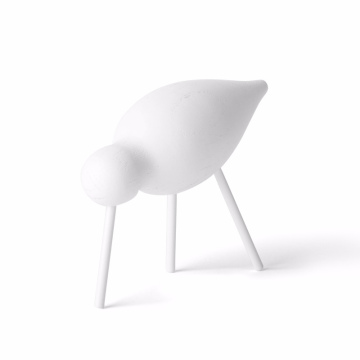Golden Bites: A Taste of Japan’s Iconic Tempura
The History and Origin of Tempura
Tempura, a dish characterized by its light and crispy batter, has a rich history that can be traced back to the 16th century. It is widely believed that the introduction of frying techniques occurred when Portuguese missionaries and merchants arrived in Japan, sharing culinary practices that included deep-frying vegetables and fish. This influence marked the beginning of tempura as we recognize it today.
Initially, the term "tempura" derived from the Latin word “tempora,” referring to the times of Lent when Catholics would eat fried food. As the Portuguese prepared these dishes using local ingredients during this period, the concept began to take root in Japan. Early tempura was somewhat different from its modern incarnation; it featured whole fish and vegetables but used a heavier batter and broader cooking approach.
As time passed, the Japanese adapted this cooking method to better suit their palate and available ingredients. By the Edo period, the dish had undergone substantial evolution. The batter became lighter, primarily made from wheat flour, egg, and cold water, enhancing the dish's texture and flavor. Street vendors proliferated, serving tempura as a quick and delightful meal option, thus solidifying its place within the landscape of Japanese street food.
In the late 19th and early 20th centuries, tempura gained further recognition and adapted techniques were employed, creating diverse variations of the dish. A key milestone in its development was its integration into the traditional kaiseki dining culinary experience, where tempura became a refined dish, served alongside seasonal vegetables and seafood. This adaptation not only showcased the culinary skill involved in preparing tempura but also cemented its status as an iconic dish in Japanese cuisine, revered for both its simplicity and elegance.
The Art of Making Perfect Tempura
Creating exceptional tempura is an intricate process that begins with the selection of fresh, high-quality ingredients. Traditionally, vegetables such as sweet potatoes, zucchini, and bell peppers are commonly used, alongside seafood options like shrimp and white fish. The freshness of these ingredients plays a critical role in the overall flavor and texture of the dish. It is crucial to source ingredients that are in season to ensure they are flavorful and at their best for frying.
Once the ingredients are prepared, the next step is to create the batter. The batter for tempura is distinct due to its light and airy consistency, achieved by using a combination of cold water and flour. Expert chefs often recommend using cake flour or a flour blend to enhance texture. The key to perfecting the batter lies in minimizing gluten formation; therefore, it is essential to mix the ingredients gently, leaving some lumps intact. For an extra touch, incorporating a small amount of cornstarch can provide additional crispness.
The frying process is where the artistry of tempura truly shines. The oil temperature must be meticulously controlled, ideally between 170°C to 190°C (340°F to 375°F). To achieve a golden and crispy exterior, it is vital not to overcrowd the pan, as this can lower the oil temperature. Each piece should be fried until a light golden color is achieved, which usually takes about two to three minutes. Allowing the tempura to drain on paper towels post-frying will ensure excess oil is removed, resulting in a delectable crunch.
For those eager to master tempura, expert chefs emphasize the importance of timing and culinary experience to refine skills. Practicing with a variety of ingredients and adjusting frying times will bolster proficiency. With patience and attention to detail, anyone can replicate the exquisite taste of tempura in their own kitchen.
Popular Ingredients and Variations of Tempura
Tempura is a beloved Japanese dish known for its light, crispy batter, showcasing a variety of ingredients that highlight the art of deep frying. Common vegetables used in tempura include sweet potatoes, bell peppers, zucchini, and eggplant. These ingredients are selected not only for their flavors but also for their textures, contributing to the enjoyable crunch that accompanies each bite. In addition to vegetables, seafood plays a significant role in tempura, with shrimp, white fish, and squid often featuring prominently. The contrast between the delicate nature of seafood and the crispiness of the batter creates a harmonious balance that tempura aficionados value.
One of the fascinating aspects of tempura is its regional variations across Japan. Each region has its own unique ingredients and approaches to preparing this dish. For instance, the Kanto region, which includes Tokyo, often favors more delicate ingredients like asparagus and soft-shell crab, while the Kansai region, which encompasses places like Osaka and Kyoto, may emphasize thicker batters and seasonal vegetables, such as lotus root and pumpkin. This diversity not only reflects local agricultural produce but also cultural preferences in flavor and presentation.
Moreover, tempura is known to adapt according to the seasons, with chefs frequently incorporating seasonal specialties into their offerings. For example, during spring, ingredients such as bamboo shoots and young ferns are popular, while in summer, lighter options like green beans and cherry tomatoes take center stage. These variations significantly contribute to the overall versatility and popularity of tempura, allowing it to be enjoyed in various forms, from casual street food to elegant dining culinary experiences. The rich tapestry of ingredients and innovative approaches ensures that tempura remains a dynamic and evolving dish within Japanese cuisine.
Serving and Pairing Tempura: A Culinary Experience
Tempura is a revered dish in Japanese cuisine, characterized by its light, crispy texture and deep-fried vegetables or seafood. To serve tempura authentically, it is essential to follow traditional customs and practices that enhance the overall dining culinary experience. Typically, tempura is enjoyed hot and fresh, directly from the frying pan to the table. Presenting it on a decorative plate or a bamboo tray can elevate the aesthetic appeal. Individual portions should be served, thereby allowing each guest to customize their meal to their liking.
The accompanying sauces and garnishes play a crucial role in the enjoyment of tempura. Traditionally, **tentsuyu**, a dipping sauce made from dashi, soy sauce, and mirin, is served alongside tempura. This sauce can be complemented with a garnish of grated daikon radish for added flavor. Some may also choose to serve a sprinkle of salt, which allows the natural taste of the batter and the main ingredient to shine through. Moreover, fresh lemon wedges can be offered to add a subtle citrusy brightness that complements the dish.
Dining on tempura is as much about the culinary experience as it is about the food itself. It is often enjoyed in a communal setting, where guests share various types of tempura. In Japanese culture, this form of shared dining fosters connection and conversation among diners. When considering beverages, tempura pairs exceptionally well with **sake**, which enhances the flavors without overwhelming the palate. Alternatively, a light, crisp beer can provide a refreshing contrast to the dish's richness.
Creating a complete dining culinary experience centered around tempura involves carefully selecting not just the dish, but also the ambiance. Using table settings that reflect Japanese aesthetics, such as simple dishware and natural materials, can enhance the overall culinary experience. Engaging in the cultural etiquette of enjoying tempura adds an enriching dimension, making it not merely a meal, but a celebration of culinary artistry.






